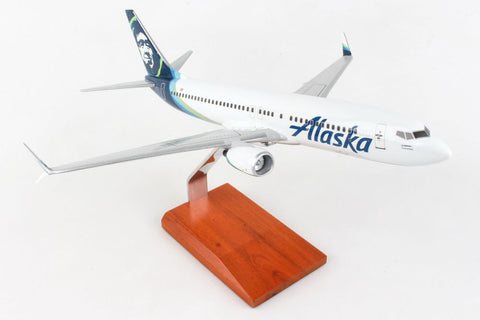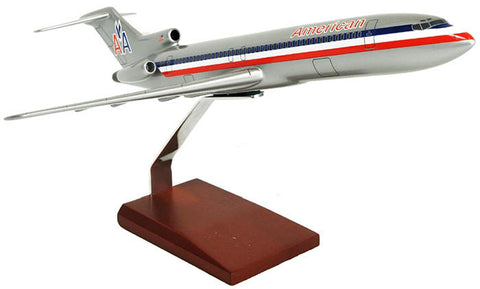
Executive Series American Airlines Airbus A300-600 Mahogany Model
$ 339.95 $ 369.95
Introducing the ready-to-ship American Airlines A-300 mahogany model. This 1/100 scale model was handmade with precision and accuracy to produce the finest model that will be the centerpiece of your collection for years to come. This model is a perfect gift for pilots and aviation enthusiasts alike. Not too big or too small, this model features a wingspan of 17.5 inches and a length of 21 inches. This model features a very accurate paint scheme with realistic panel lines.
About this Model:
Your model will be delivered exactly as shown in the photographs with the exact same paint scheme. The stand shown in this photograph may vary or change with the model you receive. If you would like to change this model in any other way, please visit our Custom Model section of our website to commission a customized model to be built.
History of the Airbus A-300:
The Airbus A300 is a short- to medium-range widebody jet airliner. Launched in 1972 as the world's first twin-engined widebody, it was the first product of Airbus Industrie, a consortium of European aerospace companies, wholly owned today by EADS. The A300 can typically seat 266 passengers in a two-class layout, with a maximum range of 4,070 nautical miles (7,540 km) when fully loaded, depending on model. Launch customer Air France introduced the type into service on 30 May 1974. Production of the A300 ceased in July 2007, along with its smaller A310 derivative. Freighter sales for which the A300 competed are to be fulfilled by a new A330-200F derivative. The mission requirements were given in 1966 by Frank Kolk, an American Airlines executive, for a Boeing 727 replacement on busy short to medium-range routes such as United States transcontinental flights. His brief included a passenger capacity of 250 to 300 seated in a twin-aisle configuration and fitted with two engines, with the capability of carrying full passengers without penalty from high-altitude airports like Denver. American manufacturers responded with widebody trijets, the McDonnell Douglas DC-10 and the Lockheed L-1011 Tristar, as twinjets were banned from many routes by the FAA.
In September 1967, the British, French, and German governments signed a Memorandum of Understanding (MoU) to start development of the 300-seat Airbus A300. An earlier announcement had been made in July 1967, but at that time the announcement had been clouded by the British Government's support for the Airbus, which coincided with its refusal to back British Aircraft Corporation's (BAC) proposed competitor, a development of the BAC 1-11, despite a preference for the latter expressed by British European Airways (BEA). In the months following this agreement, both the French and British governments expressed doubts about the aircraft. Another problem was the requirement for a new engine to be developed by Rolls-Royce, the RB207.
In December 1968, the French and British partner companies (Sud Aviation and Hawker Siddeley) proposed a revised configuration, the 250-seat Airbus A250. Renamed the A300B, the aircraft would not require new engines, reducing development costs. To attract potential US customers, American General Electric CF6-50 engines powered the A300 instead of the British RB207. The British government was upset and withdrew from the venture; however, the British firm Hawker-Siddeley stayed on as a contractor, developing the wings for the A300, which were pivotal in later versions' impressive performance from short domestic to long intercontinental flights. Airbus Industrie was formally set up in 1970 following an agreement between Aérospatiale (France) and the antecedents to Deutsche Aerospace (Germany). They were joined by the Spanish CASA in 1971. Each company would deliver its sections as fully equipped, ready-to-fly items. In 1972 the A300 made its maiden flight. The first production model, the A300B2, entered service in 1974 followed by the A300B4 one year later. Initially the success of the consortium was poor, but by 1979 there were 81 aircraft in service. It was the launch of the A320 in 1987 that established Airbus as a major player in the aircraft market the aircraft had over 400 orders before it first flew, compared to 15 for the A300 in 1972. The A300 was the first airliner to use just-in-time manufacturing techniques. Complete aircraft sections were manufactured by consortium partners all over Europe. These were airlifted to the final assembly line at Toulouse-Blagnac by a fleet of Boeing 377-derived Aero Spacelines Super Guppy aircraft. Originally devised as a way to share the work among Airbus' partners without the expense of two assembly lines, it turned out to be a more efficient way of building aircraft (more flexible and reduced costs) as opposed to building the whole aircraft at one site.





Share this item: